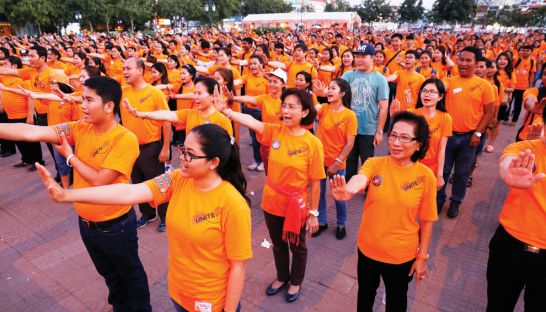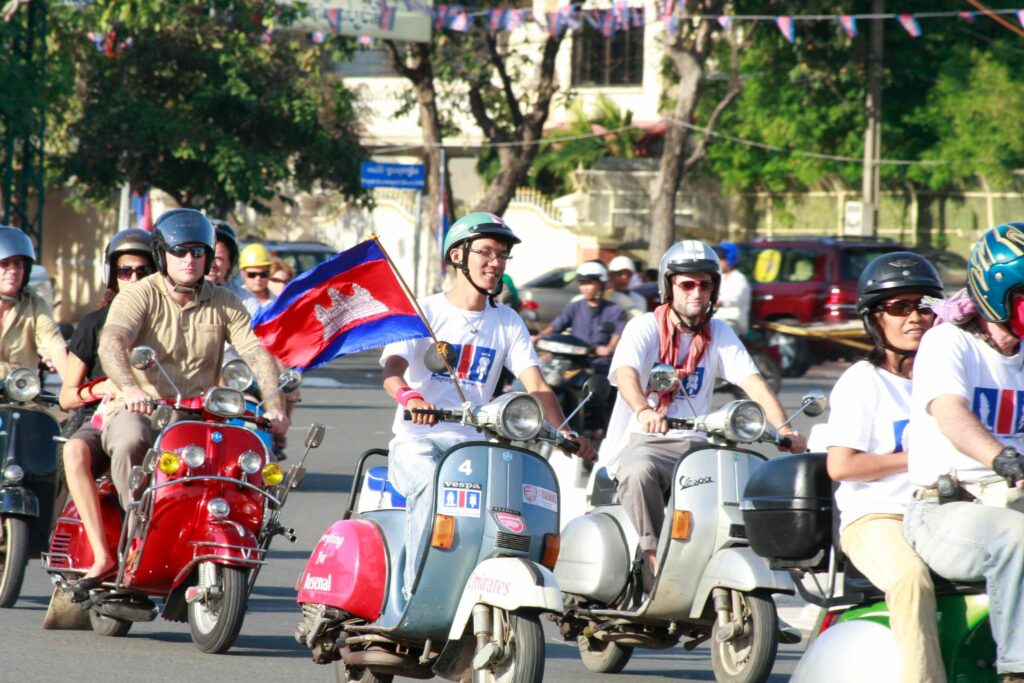Unofficial Translation from The Phnom Penh Post’s Khmer edition
TUESDAY, 23 FEBRUARY 2016
TONG SOPRACH
ហេតុអ្វីបានជាគ្មានស្ថាប័នណាថ្កោលទោសអំពើឃោរឃៅកាត់កស្ត្រី?

Of the 365 days in a whole year the rights of women seem to only be promoted on one day and then Women´s Day will wait for another year to happen again. The promotion activity, moreover, is generally organized only in Phnom Penh, this way excluding many other provinces and moreover the countryside. Similarly, the spirit of ending violence against women is only celebrated during the 16-day Campaign and at the One-Trillion-Voice event.
The relevant governmental institutions and many NGOs seem to be so “quiet” amid the increase of violence against women and children. Such cases include but are not limited to 1) the previous week’s case in Siem Reap province in which a man beheaded his so-called fiancé whom he could not wed because he was already a married man with two children, 2) the rape-and-kill case in Kampot province whose victim was a school girl mocking the murderer’s “ugliness” and 3) the killing of a whole family, including small children, in Sihanouk Ville, which happened because they accused the killer of being a “chicken thief”.
Why have the relevant ministries not shown their statement/rally to such violence through strong condemnation?
Waiting until the 16-day white ribbon campaign, One-trillion-voice event, or even Women’s International Day seems too late. But if someone asks what has the Ministry of Women’s Affairs has been doing to help? Some women NGOs doesn’t show anything notably enough to be considered a success but besides blaming the others (NGOs)? And then They would start angry with the people who asked the question and they asked back where are you from? And why you know nothing?
Regarding the violence against women data, currently, does not improve as the same data reported in 2009 by MoWA, with one-in-fifth women suffering from the abuse from their inmate or husband compared to UN Women/WHO/MoWA, 2015. Today’s direction of the tendency is ambiguous while the acts of violence are getting more and more ferocious, just like recent woman’s beheading case, in which the murderer was a soldier of ISIS (the Islamic State).
Did these bloodthirsty killers have access to the horrible, violence-based news and pictures on Facebook, shared by many inconsiderate users who just want to show that they know about the violence before others and have not cared about the consequences? Meanwhile, a number of local media have been showing those contents without censoring or taking the woman´s dignity into perception.
In the 90s, during the battle between Khmer Rouge and the government, a description and picture of a Khmer Rouge soldier carrying the head of the enemy he (government soldier) had just killed was printed on a local newspaper Raksmey Kampuchea. Such image, undoubtedly, was disturbing for general views.
A similar example is the case of a young woman’s beheading, as pictures of the beheaded victim, her body without clothes, was posted, and went viral on social media.
To make the matter worse, the video clips showing the police questioning the murderer when he was arrested in the paddy field behind his house, and reconstructing what really happen at the crime scene were broadcasted on TVs, along with the additional verbal narration by the hosts and newscasters. According to the narration, the murderer beheaded the victim because he was afraid the picture would be on his eyes, allowing the police to find him easily.
The narrative part was added to gain popularity, yet it could have considerable impacts on the society as it tend to plant the information in the viewers’ mind, making it hard for them to forget it. This memory could be recalled by anyone when their desire to kill occur, using the terrible means they saw or heard on TV, such as beheading or eye gouging.
Even the eye(s) evident is still questionable? This is just a legend or maybe superstition or rumor, yet it means that however the murderers their target, they also have to gouge their eyes, behead or destroyed the face of the victim.
This is an impact of the media who misuse their power. Some newspapers even show the terrible pictures on their front page as if they were making money from the dead. In such cases, no institution made any statement nor act against it.
The Ministry of Information has already released a warning for not to show the ugly image of victims or brutal road accident on the front page or TV screen yet it has not been working as it is not common attitude. However, a few years ago, a family of a French man who was killed in Kampong Speu warned that they would sue any press who published his skull in the media.
In some cases, it is the police officers who are the one to blame since they want to earn some extra money by selling these pictures or video to the press although most cases are closely inspected. Sometimes, they mess up the evidence as the picture shows only one murder while his/her real accomplish (es) escaped.
Due to over three decades of civil war, the violent trauma remained in the hearts of our Cambodian people.
The lack of education, furthermore, combined with the modern technology and poison from evil media, causes people to get addicted to violent internet contents, to share them and to copy them in real life.
Obviously, the police raid and the assault on the two lawmakers from the opposition party (CNRP) a few months ago indicate that the violence and shooting is taking place way too easy. The party leaders, sometimes used abused words toward or even threaten one another, which is also the root of the problems in the society.
In conclusion, if the relevant institutions and individual still ignore the issue and do not condemn or criticize all forms of physical and verbal abuse as well as the display of violence-related internet contents, the violence against women and girls in Cambodia will get worse and worse.
Increasing national budget should be transferred to sub-national levels, where there is a women and children committee (CWCC in district level and CCWC in commune level). This budget could be used to train local people on the gender-based violence and how to prevent it. Additionally training on prevention and on the laws and policies that exist to combat domestic violence in the community should take place.
Otherwise, Cambodia would not be able to achieve the fifth Sustainable Development Goals, the most comprehensive framework ever put forward to promote gender equality, the empowerment of women and girls, and to end discrimination against women and girls once and for all.
Tong Soprach is a social-affairs columnist for the Post’s Khmer edition.
Comments: [email protected]
